Vic virus deaths hit grim new record with 41 deaths, but cases drop
Forty-one lives were added to Victoria’s coronavirus death toll on Monday — the nation’s darkest day since the beginning of the pandemic. But the reason why has been explained, with Chief Health Officer Brett Sutton also revealing what he expects this week’s case numbers to be.
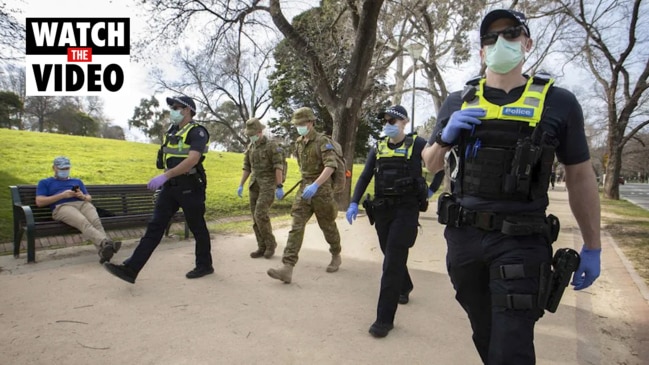
Coronavirus
Don't miss out on the headlines from Coronavirus. Followed categories will be added to My News.
This coronavirus article is unlocked and free to read in the interest of community health and safety. Get full digital access to trusted news from the Herald Sun and Leader for just $1 a week for the first 12 weeks.
Victorians have a six-day wait before the state’s road map to recovery is unveiled.
It comes as the state recorded 73 new coronavirus cases and 41 deaths on Monday.
Premier Daniel Andrews said he would announce the plan to ease stage four restrictions on Sunday, following talks this week with industry, unions and community organisations.
“(The road map) will cover industries in the first instance, industries that have been closed as part of stage four,” Mr Andrews said.
“It will then cover all the usual settings that we have all become well and truly accustomed to.
“Things like the cafes, bars, restaurants, retail, personal care … The degree or the amount of information we can provide for each of those may vary … we’re not going to be able to necessarily give every single sector a hard and fast date at which they’ll be reopening … There are a number of settings, there are a number of ways you could go where you can have complete certainty that case numbers will explode.”
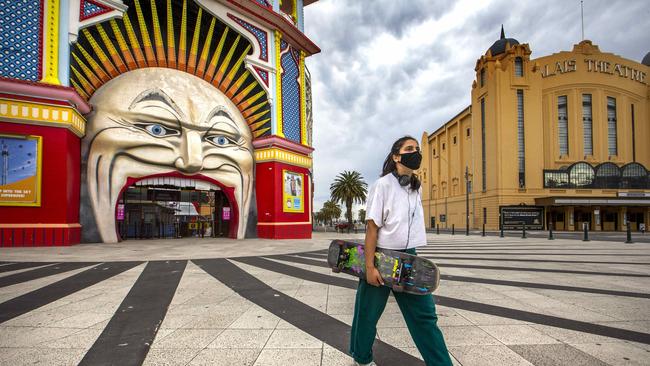
SIX THINGS WORKPLACES MUST DO IN STAGE THREE
Mr Andrews said we would have to find a “COVID-normal” and his aim was to lock in a plan that would last for many months.
“We know every Victorian wants certainty about the future, for them, for their family and for their work,” he said.
“By the end of the week we will lay out a plan to re-open our state … It is too early today to settle that road map. Another week’s data is critically important.”
Mr Andrews said physical distancing, working from home and limiting customers in stores would have to continue, as would the ongoing use of face coverings.
He flagged “workplace bubbles” would be a key feature, saying they should be created to limit the number of staff who have prolonged and close contact with each other.
“Firstly, we have to ensure physical distancing, including following density requirements, making sure staff work from home wherever possible, eliminating the total number of staff and customers in any enclosed area, and stopping carpooling,” Mr Andrews said.
“Wearing a face covering at all times in the workplace and ensuring that PPE is used, particularly in those higher risk industries.
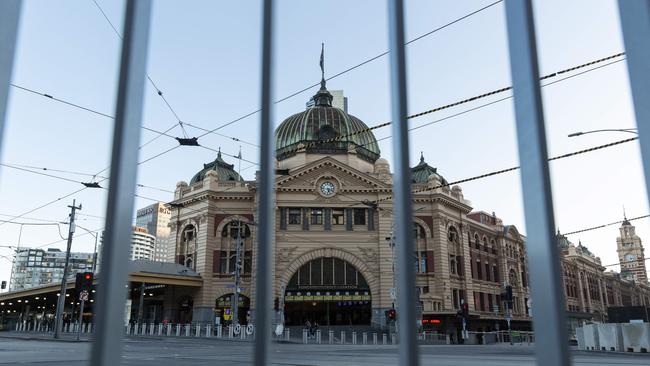
“Requiring hygienic workplaces, so things like high-touch points being regularly cleaned, staff regularly washing their hands, the availability and the use of hand sanitiser, so on and so forth.
“And finally, continuing to act quickly if a staff member becomes unwell, and having a policy that can be fairly described as strict when it comes to keeping staff at home if they are unwell, and making sure that they are not at work between when they have a test … and when the test result comes back.”
Other measures would include avoiding enclosed spaces by opening doors and windows for airflow, and moving tearooms, lunch breaks and meetings outside.
Mr Andrews said stages three and two were going to look substantially different and operate on a “traffic light system”.
“We will move through different phases and there will be some elements that might be similar to the stages as we went into stage four, but it will be very different,” he said.
It comes as Deputy Chief Medical Officer Nick Coatsworth said it was unlikely metropolitan Melbourne would come out of stage four restrictions in two weeks.
WHY DEATH TOLL SPIKED ON MONDAY
Victoria has recorded its darkest day since the beginning of the pandemic, with 41 new COVID-19 related deaths added.
Premier Daniel Andrews said eight of those deaths occurred in the past 24 hours, while 33 deaths occurred before Sunday.
The update comes after aged-care facilities on Sunday reported those deaths to the health department.
At least 37 of the new deaths are linked to aged-care outbreaks.
The previous biggest one-day increase in fatalities was recorded on August 17 when 25 people died.
The record comes as the state marked another milestone — its lowest daily increase in more than six weeks with 73 new cases detected.
July 3 was the last time cases were this low, with 66 cases recorded.
Chief Health Officer Brett Sutton said he hoped daily case totals would number around 40 to 50 by the end of the week.

Monday’s cases bring the state’s total to 19,080, with 453 Victorians in hospital, 21 receiving intensive care and 13 patients on a ventilator.
But concerningly, there are 112 new mystery cases.
Currently, there are 2620 active cases, including 1225 in aged care, 378 healthcare workers and 44 in disability facilities.
Meanwhile, a woman who travelled more than 5km from her home because there “was no good coffee in her area” is among the latest rule-breakers to be fined for breaking coronavirus restrictions.
Victoria Police issued 195 fines in the past 24 hours, including 60 for curfew breaches and 21 for not wearing a mask, while a further 21 were handed down at checkpoints.
Included in the 195 fines are:
• Four passengers, all from different households in Wyndham, travelling in a car to visit a friend in Newcomb.
• Five friends at a gathering in a Bendigo home, where only two people could provide evidence of residing at the address.
WHY WE SHOULD BRACE FOR 40 DEATHS A DAY
COUNTY COURT CANCELS ALL 2020 TRIALS
Jury trials in the County Court have been cancelled for the remainder of the year due to the ongoing coronavirus crisis.
Chief Judge Peter Kidd announced on Monday that hopes of re-starting a full trial list in the fourth term of the court’s calendar from October 5 had been dashed.
The trials set to go ahead have been vacated and would be assigned a date in 2021, he said.
“It seems sufficiently clear that the circumstances are unlikely to permit the court to resume jury trials,” Judge Kidd said.
“There remains considerable uncertainty regarding the timeline and manner in which restrictions may be eased after the current Stage 4 restrictions in Melbourne end.
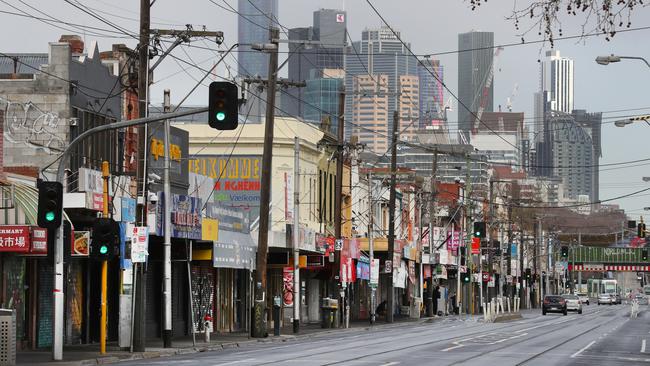
“However, public statements indicate that any easing of restrictions will be staged, and any opening-up will be gradual and cautious.”
Victoria’s judicial system has been hit with unprecedented delays with COVID-19 restrictions not allowing for large gatherings of jurors at court.
Many accused criminals have used the delays to be freed on bail due to the uncertainty of when their case will be heard.
Judge Kidd said if the situation improves, the court would move to host a pilot of a limited number of jury trials towards the end of the year.
“Any future decision to resume jury trials will be informed by expert health advice and also by the level of restrictions likely to be in place at the time of resumption,” he said.
— Rebekah Cavanagh
VICTORIANS LOOK TO ‘NORMAL’ CHRISTMAS
Mr Andrews flagged large family gatherings would likely still be some way off, but with less than four months until the festive season, he said he hoped families could be together at Christmas.
“We had a different Mother’s Day. No-one was happy about that. We’re going to have a different Father’s Day. I want to make sure we have a Christmas Day as close to normal as possible,” he said.
“If we do this too quick, if we do this chasing something that might be popular for a few weeks, if we forget it’s a pandemic and think it’s a popularity contest, well, then Christmas won’t look normal at all.
“It will be very, very different Christmas Day. It will be up and down, in and out of different restrictions and different lockdowns.”
Prof Sutton also cast forward to summer and encouraged Victorians to “hold the course” as the pandemic continued.

“Holding the course is exactly the thing when we are getting down to those very low numbers,” he said.
“That means that we can look at a summer that has some familiarity to us, we can see friends and family, we can go out to dinner, where we can have a Christmas dinner together, where we can enjoy those sunny days.
“The pain that is happening every day now: we are all fed up with it, absolutely fed up with it.
“But holding the course, even as we get down to these very low numbers, is absolutely critical to get that control that we can be confident that we will maintain.”
The Chief Health Officer also urged against complacency as daily case totals continued to dip, warning a superspreader could trigger another wave in the pandemic.
“A single case can cause 100 cases in a week. A single case can cause 1000 cases
in a couple of weeks,” Prof Sutton said.
“So we have to be mindful that even low numbers do not give you that absolute confidence that everything is in control and it is all going on the right direction.”
FAMILIES TO STAY LOCAL FOR SCHOOL HOLIDAYS
When asked if Melburnians would remain in the city during school holidays, Mr Andrews hinted that travel restrictions would continue to apply.
“I think that we will jealously guard the low numbers in regional Victoria, and I think every regional Victorian would want us to do that,” he said.
“At the same time, I think people in Melbourne know and understand that Melbourne is in a different place.
“The science and the presentation of the virus is very different in metropolitan Melbourne that it is in regional areas, and keeping those numbers low in regional areas is very, very important — not just for us in a strategic or academic sense, it is absolutely critical to us being able to open the whole state in a steady, cautious, but in a progressive and sustainable way.”
Regional Victoria has 154 active cases — 50 in Geelong, an increase of one; nine in Greater Bendigo; and six in Ballarat.
VIRUS’S ECONOMIC TOLL REVEALED
It comes as more workers in Victoria will be living off the federal government’s wage subsidy scheme than in every other state combined before the end of the year, according to new data.
Analysis from Treasury also reveals the brunt of the economic hit caused by the second wave has been felt by Melburnians, with the regions avoiding some of the pain.
Josh Frydenberg on Sunday launched a scathing attack on Daniel Andrews’ handling of the coronavirus and his failure to release an economic recovery plan. The Treasurer slammed the Premier for a “litany of failures” that had a “devastating impact”.
Treasury analysis showed almost 30,000 Victorians had started receiving unemployment benefits since the end of June — more than half of whom joined the unemployment queue over the past two weeks alone.
The wages of almost a million Victorians are already being supplemented through the federal government’s JobKeeper wage subsidy. Treasury estimates that by December about 60 per cent of the scheme’s 2.24 million recipients will be in Victoria.
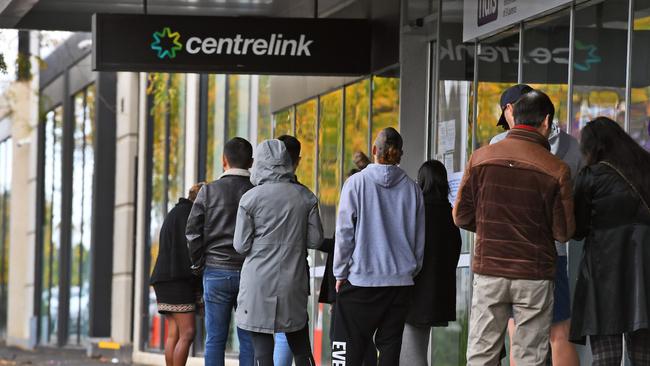
Melburnians have been harder hit than regional Victorians in the second wave, with an 8 per cent jump in unemployment benefit recipients in the city compared with 3 per cent in the country.
Victorians are also spending less on their households since the second lockdown began when compared with the rest of Australia.
Non-essential spending also plummeted, dropping 45 per cent in recent weeks.
The Sunday Herald Sun revealed Victoria’s devastating second wave of coronavirus was costing the state between $300m-$400m a day in economic activity.
A leading economics and analytics firm warned the cost of the current lockdown could run as high as $25bn.
Mr Frydenberg on Sunday said Mr Andrews had added economic pain by failing to outline the road out of restrictions for businesses.
“There’s been a litany of failures in Victoria. Obviously quarantine is the most graphic of that,” Mr Frydenberg said.
”We’ve heard from no lesser a body than the Australian Medical Association that what has transpired in Victoria is like a slow car crash, that everyone has been witnessing as it’s been occurring.
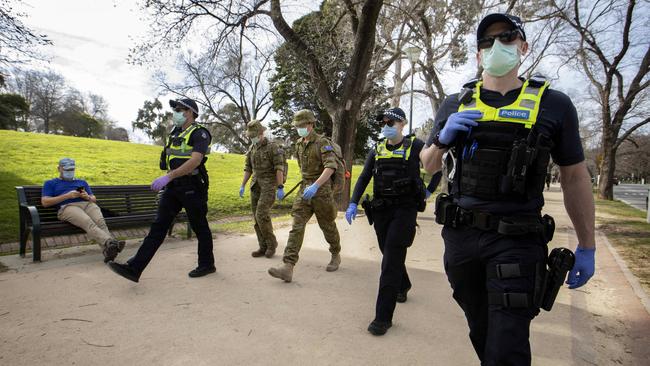
“It is devastating what is happening in Victoria and we’re only two weeks away from the end of the so-called stage four restrictions and businesses are in the dark as to how they’ll get their workers back and their doors open.
“These are the strictest of restrictions taking a huge toll on people’s mental health, but also on the economy.”
Mr Andrews said he had “no interest” in fighting with Mr Frydenberg.
“There is no economic recovery until we can get the health problem fixed,” Mr Andrews said. “That’s the story of every nation across the world.”
Mr Andrews said it did not make economic sense to emerge from the second wave and support businesses without restrictions to control the spread of the virus.
He flagged the government would today announce how it would “engage” with businesses and industry on a plan to reopen to “ensure we are getting the latest and best input around what that opening up should look like”.
The federal government expects to get its JobKeeper and Jobseeker extension legislation through parliament this week.
WHY STAGE FOUR LOCKDOWN COULD BE EXTENDED
Premier Daniel Andrews has not ruled out stage four restrictions being extended past September 13.
A deal to extend the government’s state of emergency powers by six months is also up in the air after a group of crossbench MPs declared they would not support it.
Public health authorities are to assess infection data over this week as they work to determine what rule changes will be possible when the current limits are scheduled to end in a fortnight.
It comes as data reveals a spike in traffic in several locked-down suburbs during curfew hours.
New data compiled by Real Time Traffic show a substantial drop in car movements since Stage 4 restrictions were introduced, but also found pockets of the city where movement actually increased.
Key routes in Melbourne’s western suburbs, southeastern suburbs and the CBD were among the main areas to record weekly spikes and these regions have led the state for infections.
Vehicle counts also show much of this travel was occurring between 2am to 5am.
Read the full story here.
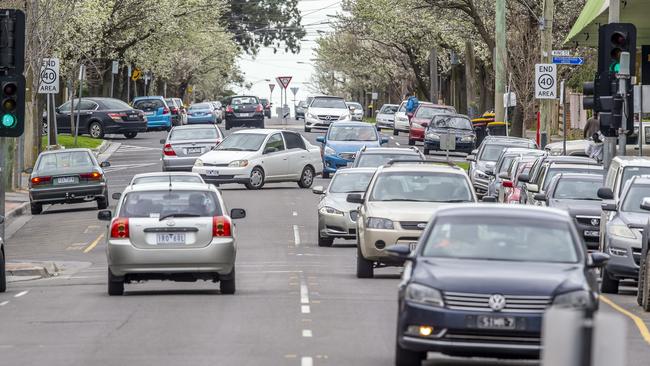
NEWMAN URGES PROTESTS AS FLARE-WIELDING GANG RUNS RIOT
Controversial TV personality Sam Newman has urged thousands to take to the streets to protest Victoria’s strict coronavirus restrictions.
On Sunday, Newman urged Victorians to “take the city/state back” as he proposed that 250,000 people should gather on the CBD streets in protest over lockdown.
It comes as a man and two teens were arrested at an anti-lockdown rally in Melbourne’s north on Sunday night and several more were fined for a separate demonstration in the city’s southeastern suburbs.
Images appearing to show dozens of men — some wearing Guy Fawkes masks — gathering on suburban streets in Meadow Heights surfaced on social media on Sunday afternoon.
Read the full story here.
SUPERMARKETS DEEP-CLEANED AFTER INFECTIONS
Four Melbourne supermarkets have been deep-cleaned after three staff members and a customer tested positive to coronavirus.
A Coles and a Woolies in Tarneit, in Melbourne’s western suburbs, and Coles Northland in Preston, were cleaned after three workers were identified as positive cases.
All three staff were now self-isolating, the supermarkets said.
Both employees at Woolworths Tarneit Gardens and Coles Northland last worked on August 18, while the staff member at Coles Tarneit, on Davis Rd, was last in the store on August 6 and was identified as a close contact to a coronavirus case outside of work.
Coles said contact tracing did not identify any other team members as close contacts to the Tarneit store case.
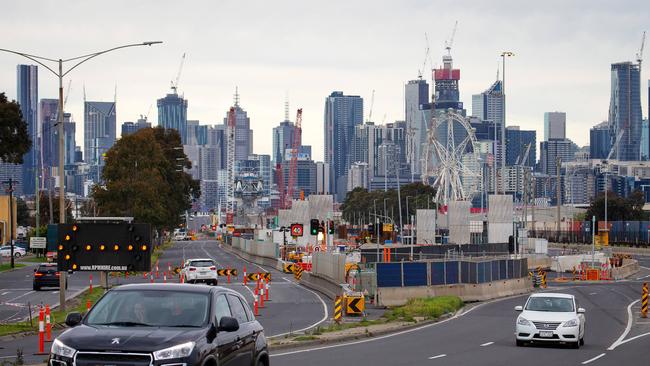
They said one other team member from the Coles Northland, who worked in close contact with the positive cases, had been asked to self-isolate.
“As an added precaution, Coles conducted an additional deep clean of the store,” the supermarket said.
Woolworths urged any customers who shopped in their Tarneit Gardens store on August 17 or 18 and felt unwell in the next two weeks to make contact with health authorities.
A Woolworths customer who shopped at the Victoria Harbour store in Docklands on August 15 has also been confirmed as a positive case.
Woolworths said they had been advised the risk of transmission to customers and team members was low.
Anyone who shopped in the Docklands on August 15 and felt unwell in the next two weeks should contact health authorities.
CONTACT TRACING TEAM STILL FAILING TO KEEP UP
One in 10 Victorians confirmed to have coronavirus over the past week were not contact traced within 24 hours of returning a positive result.
Data obtained by the Herald Sun revealed while there had been improvements in the state’s virus response, Victoria was still failing against nationally agreed standards.
It also showed last week 10 Victorians who were close contacts of a confirmed COVID-19 case were not told within 48 hours.
Read the full story here.

RELIEF FOR PARENTS AS RETURN TO SCHOOL FLAGGED
Struggling parents are rejoicing at the thought of the return to school given some kids are doing as little as an hour of learning a day at home.
Parents report children in prep to year 2 are doing the least, clocking in at two hours a day on average.
Education Department guidelines stipulate children from prep to year 2 should do a minimum of 45 minutes of literacy, 30 minutes of maths and 30 minutes of play-based learning and physical activity.
Older children in years 3 to 6 are doing an average of three and a half hours a day, an informal survey by the Herald Sun of 105 parents found.
The guidelines say children in years 3 to 10 should do a minimum of 45 minutes of literacy, 30 minutes of maths, 30 minutes of physical activity and 90 minutes of additional curriculum.
High school students, unlike primary pupils, are doing a normal school day, with most schools holding web-based sessions mirroring the usual class timetable.
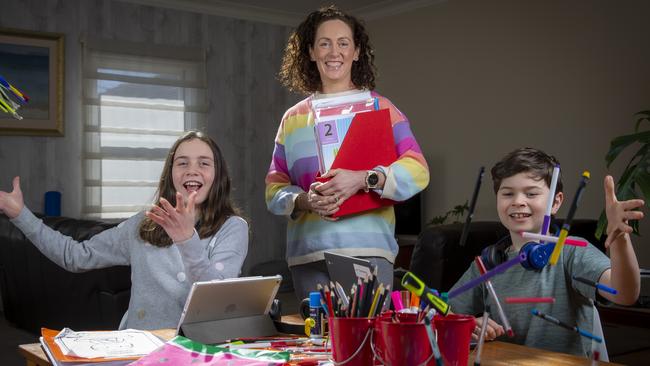
At all year levels, those at non-government schools are more likely to have a full day of web-based lessons. One parent from Haileybury said her son in year 4 was doing classroom Zooms from 8.45am to 3pm as well as homework.
Deakin University education senior lecturer Emma Rowe said it was to be expected equity gaps between public and private schools “would continue to be significant during the pandemic”.
“Parents may be picking up more of the load if their students attend public schools, although it’s difficult to generalise without some decent research into the area,” Dr Rowe said.
A University College London Institute of Education study found in some cases children hadn’t done any schoolwork at all, and only about 17 per cent did more than four hours a day.
East Kew mother of three Marissa Dunell said her daughter Alice, 13, was doing “mega hours” in year eight at private school Genazzano.
Meanwhile, her son Jack, 8, in year 2 at a Catholic primary school, was doing “an hour or two a day spread out over three or four hours”.
And her other daughter Leila, 11, at another Catholic primary school, is doing “what she needs to do as fast as she can”.
